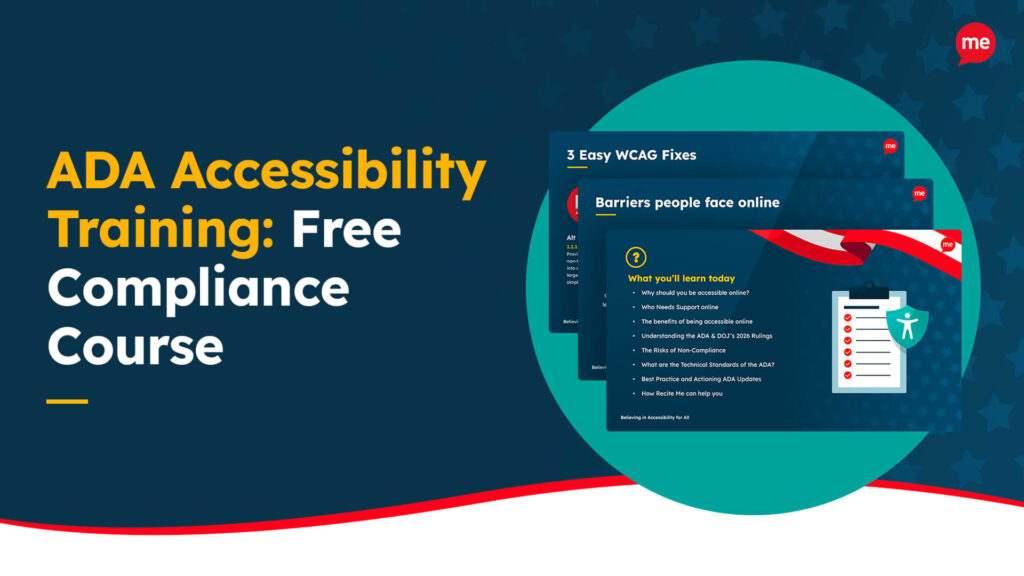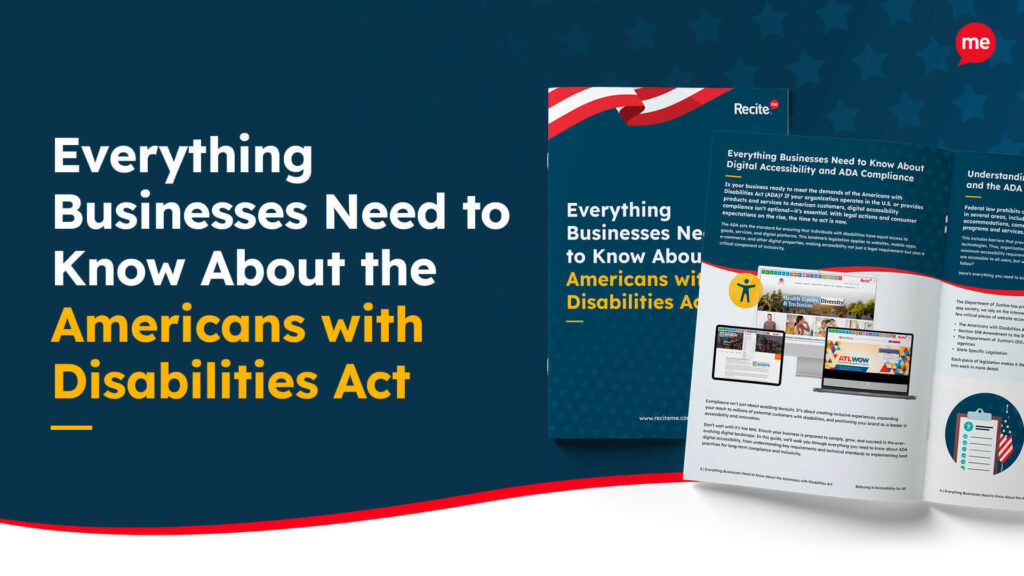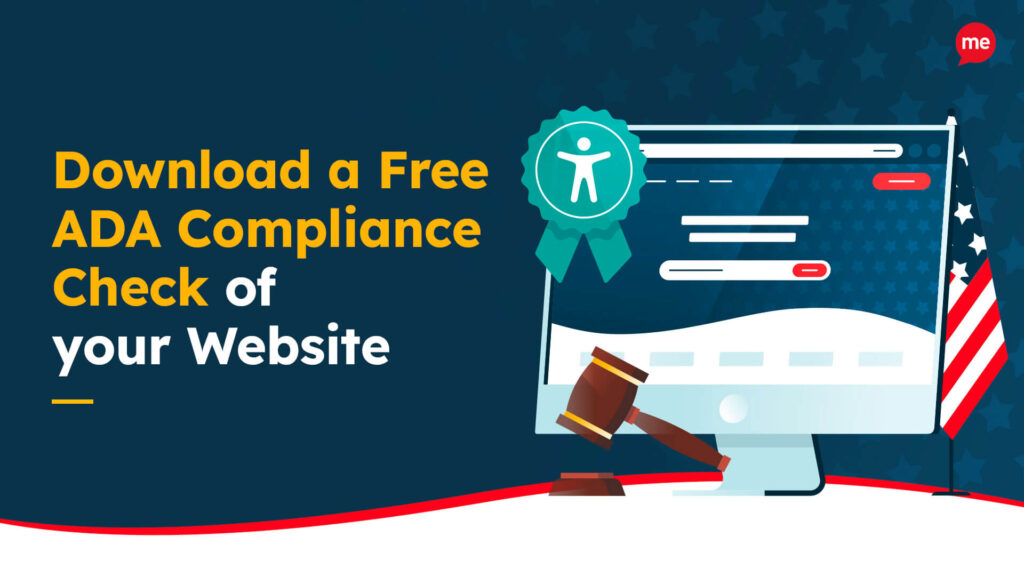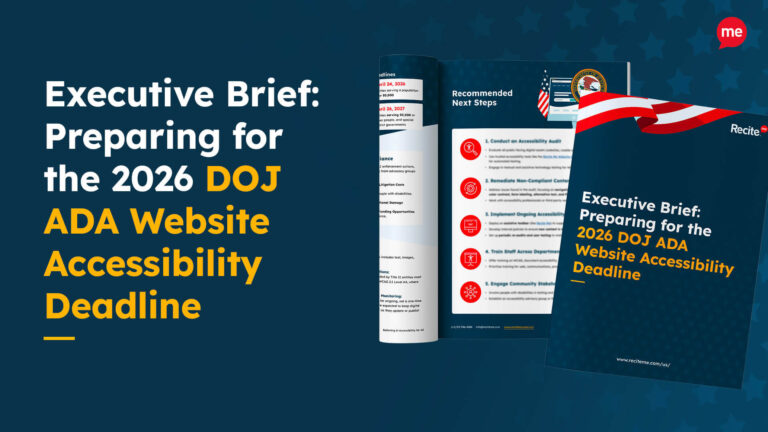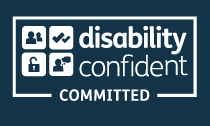Get A Free ADA Compliance Audit Of Your Website
Download NowThe Americans with Disabilities Act (ADA) has transformed the landscape of accessibility in New York and other states, ensuring equal opportunities for disabled individuals across many different facets of life. Yet, many businesses still struggle to navigate the ADA requirements, especially in states like New York, where compliance is just as much a reflection of a company’s ethics than it is its statutory duties. But where should you start? This guide breaks down everything you need to know about ADA compliance in New York and offers actionable steps to help your business succeed.
Understanding the Americans with Disabilities Act in New York
The Americans with Disabilities Act (ADA) is a federal law that was enacted in 1990 with the primary aim of combating discrimination against disabled individuals. How exactly? By making public and private businesses responsible for inaccessible facilities, processes, and platforms.
When it first came about, the act served mainly as a means of encouraging businesses to improve employment equality and access to physical spaces, but, since the rise of the internet, its scope has expanded to include websites, mobile applications, and other digital platforms.

The ADA is divided into 5 ‘titles’, each one mandating a unique set of requirements for a specific category of organization. The titles are as follows:
- Title I: Prohibits discrimination in employment by businesses with 15 or more employees.
- Title II: Requires programs, activities, and services provided by public entities to be accessible.
- Title III: Mandates that public accommodations, including websites and digital platforms, are made accessible to the general public.
- Title IV: Requires telecommunications companies to make telephone communications accessible for those with speech or hearing impairments.
- Title V: Miscellaneous provisions, protecting plaintiffs from retaliation by the accused company, among other things.
For businesses in New York, Title III often poses the greatest challenge, especially in the digital age where websites and mobile applications are increasingly viewed as “places of public accommodation”. To achieve compliance, businesses must meet the Web Content Accessibility Guidelines (WCAG), which provide clear benchmarks for digital accessibility. But more on this later.
Want to make sure your website is compliant with the Americans with Disabilities Act? Then unlock the ADA compliance checklist now. Discover actionable steps to ensure ADA compliance, helping you avoid lawsuits and any other negative consequences of non-compliance.
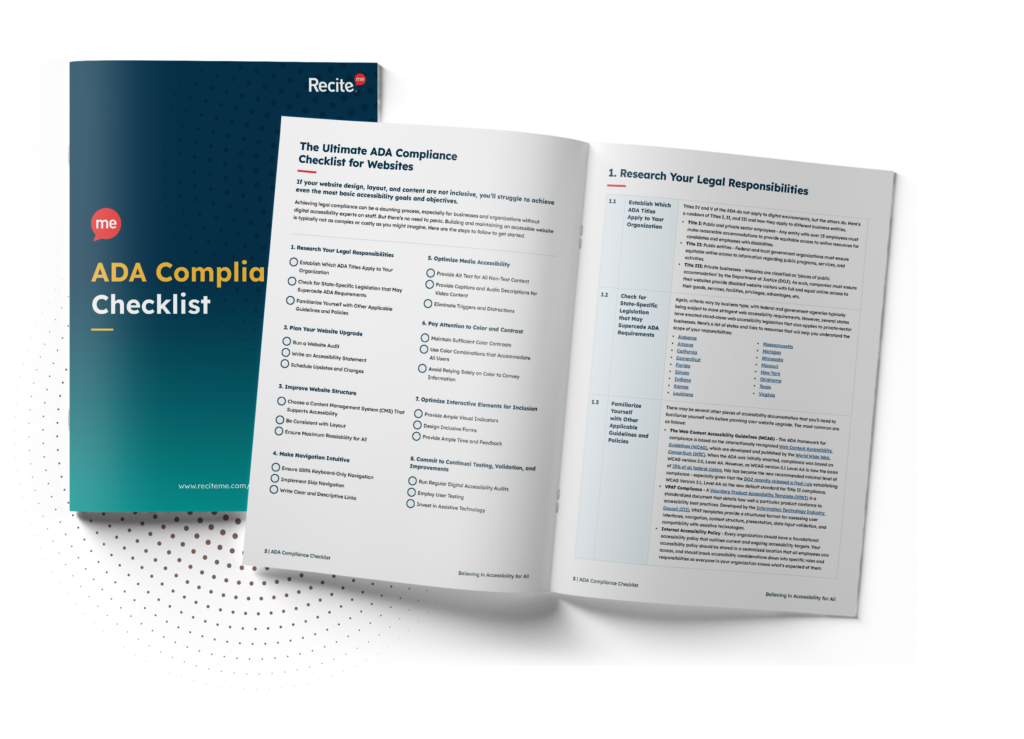
Which businesses do the New York ADA guidelines apply to?
If you are a business based in, or operating from, New York, the chances are you must comply with the ADA. Here’s a breakdown of the types of organizations the ADA applies to:
- Private employers with 15 or more employees
- Public accommodations
- State and local government services (regardless of size)
The term ‘public accommodation’ often trips people up, but it shouldn’t. Put simply, a public accommodation is any type of business that serves the public. This could be restaurants, hotels, retail stores, or medical offices, and has grown over time to include websites or digital platforms. The reason this is important is because, nowadays, just about every business has some form of online presence; hence the rise of Americans with Disabilities Act lawsuits in recent years.
As you can see, exceptions to the ADA are few and far between. For small businesses with less than 15 employees, ADA compliance may not be federally mandated, but adhering to accessibility principles is still a smart business move. This is because it acts as a safeguard against future compliance issues, preparing your business for the day when you inevitably grow beyond 15 employees or become a public accommodation.

Tips to making your website ADA compliant in New York
As mentioned earlier, inaccessible websites have become a leading cause of ADA non-compliance in recent years. This makes creating an accessible website more important now than ever before. And while it might seem daunting from the outside, breaking it into manageable steps makes the process a whole lot simpler. We’ll show you how:

Schedule regular accessibility tests
The first step to making your website ADA compliant is to test for accessibility issues. There are multiple ways to do this. First, you can use automated tools, such as an accessibility checker, which conducts quick scans of your site’s code to detect any glaring accessibility issues. You can also use manual testing methods in which accessibility experts audit your site’s operability. Finally, there is user testing. This is where you allow a group of your existing disabled users to provide feedback on your site’s accessibility from their lived experience.
For best results, it is recommended to use a combination of these methods, ideally in succession of one another. From automated testing to manual testing, the results become increasingly granular in their detail, each one picking up on nuances that the one before may have overlooked. However, this does come with some trade-offs. Manual and user testing methods are far more labor-intensive than automated ones, consuming more time and resources.
Build digital content with WCAG best practices in mind
Once your first accessibility audit is out the way, you’ll have a much better idea of which aspects of your website are accessible and which are not. The next task is to simply make the non-accessible aspects accessible. But how do you do this?
First, you need to understand the Web Content Accessibility Guidelines (WCAG). If you are not already familiar with WCAG, you soon will be. WCAG are a set of internationally-recognized accessibility standards based on 4 core principles, called POUR: perceivable, operable, understandable, and robust.
Using these principles, WCAG outlines specific success criteria according to 3 different levels of accessibility — Level A, AA, and AAA — where each subsequent level represents an increase in accessibility with a corresponding increase in standards. For example, WCAG requires a minimum color contrast ratio of 4.5:1 for Level AA and 7:1 for Level AAA.
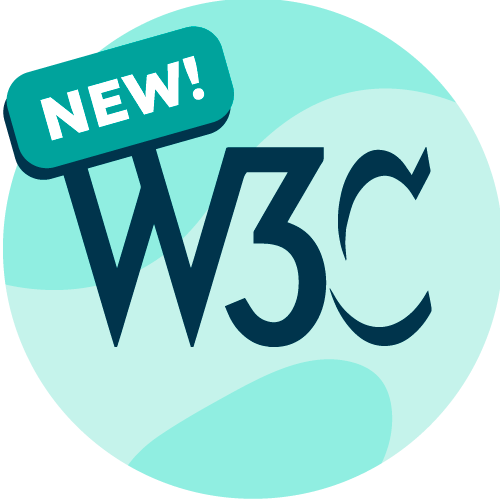
Equipped with this knowledge, you can begin making adjustments to your website. Start with the website elements that were identified during your accessibility audits and refer to the WCAG for guidance on which actions to take. To ensure complete ADA compliance, aim for WCAG 2.1 Level AA, or, if resources allow, why not strive for Level AAA compliance.
Risks of not complying with New York ADA standards
ADA non-compliance is risky businesses. New York based companies which fail to meet its high standards can expect to face some serious consequences, beyond the typical legal repercussions one might expect.
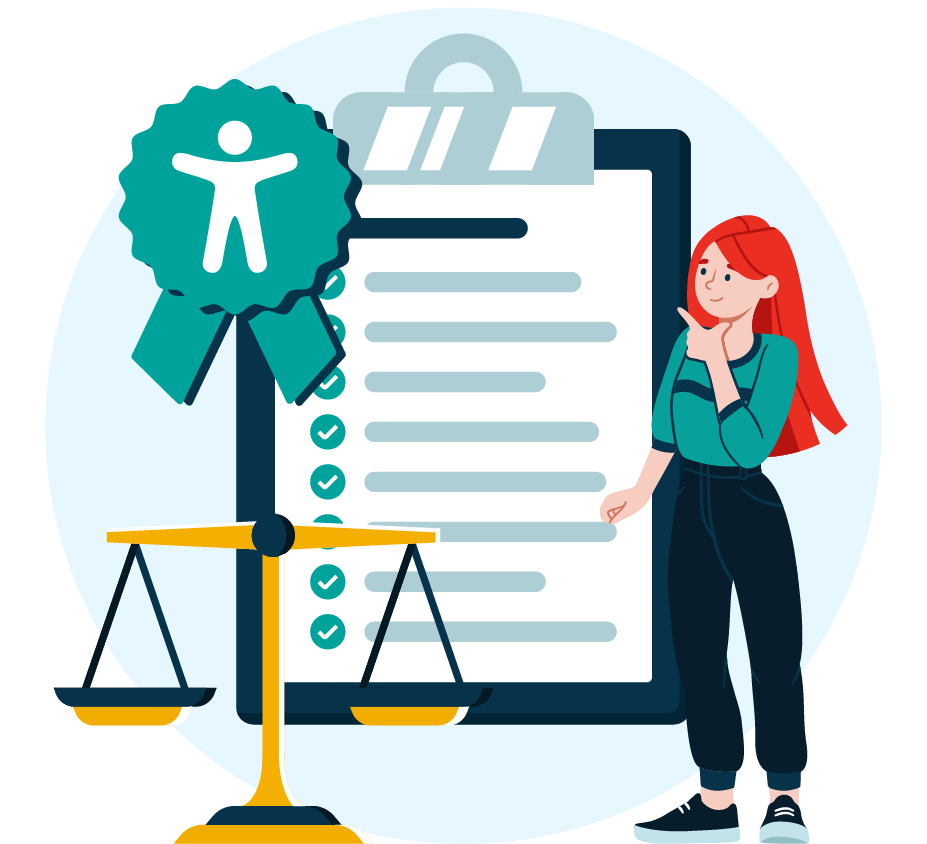
Penalties and fines
Non-compliance with the ADA can result in both federal and state penalties. For example, New York’s Human Rights Law enforces specific accessibility standards, and failure to meet these could lead to state-imposed fines. Federal penalties for first-time violations can be anywhere between $55,000 and $75,000, with this increasing to $150,000 for subsequent violations. These sorts of numbers are enough to hurt any company’s bottom line, hindering financial growth for months, or even years.
Costly lawsuits
Financial penalties are not the only cost to consider. Getting involved in a lawsuit can be an expensive process, regardless of the outcome. Additional costs can occur from things like legal fees and settlements. Too often, these costs slip under the radar, yet they can quickly add up.
Lost revenue opportunities
Accessibility is not just a legal issue – it’s a market opportunity. The disabled community, along with their families and friends, represents a substantial consumer base. Excluding this group means missing out on a significant portion of potential revenue. For example, the global spending power of people with disabilities, along with their family and friends, is estimated to be around $13 trillion. By being inaccessible, and thus ADA non-compliant, you are leaving money on the table.
Lost revenue opportunities
Accessibility is not just a legal issue – it’s a market opportunity. The disabled community, along with their families and friends, represents a substantial consumer base. Excluding this group means missing out on a significant portion of potential revenue. For example, the global spending power of people with disabilities, along with their family and friends, is estimated to be around $13 trillion. By being inaccessible, and thus ADA non-compliant, you are leaving money on the table.

Missed competitive edge
New York businesses that prioritize accessibility gain a competitive edge by demonstrating social responsibility and attracting a broader customer base. Companies that provide accessible services show that they care about their customers’ needs, which encourages loyalty and positive brand recognition. In contrast, businesses which neglect accessibility risk losing out to their more inclusive competitors.
Get a free automated ADA compliance audit of your website. This audit will highlight compliance violations and provide the recommendations needed to meet ADA compliance standards.
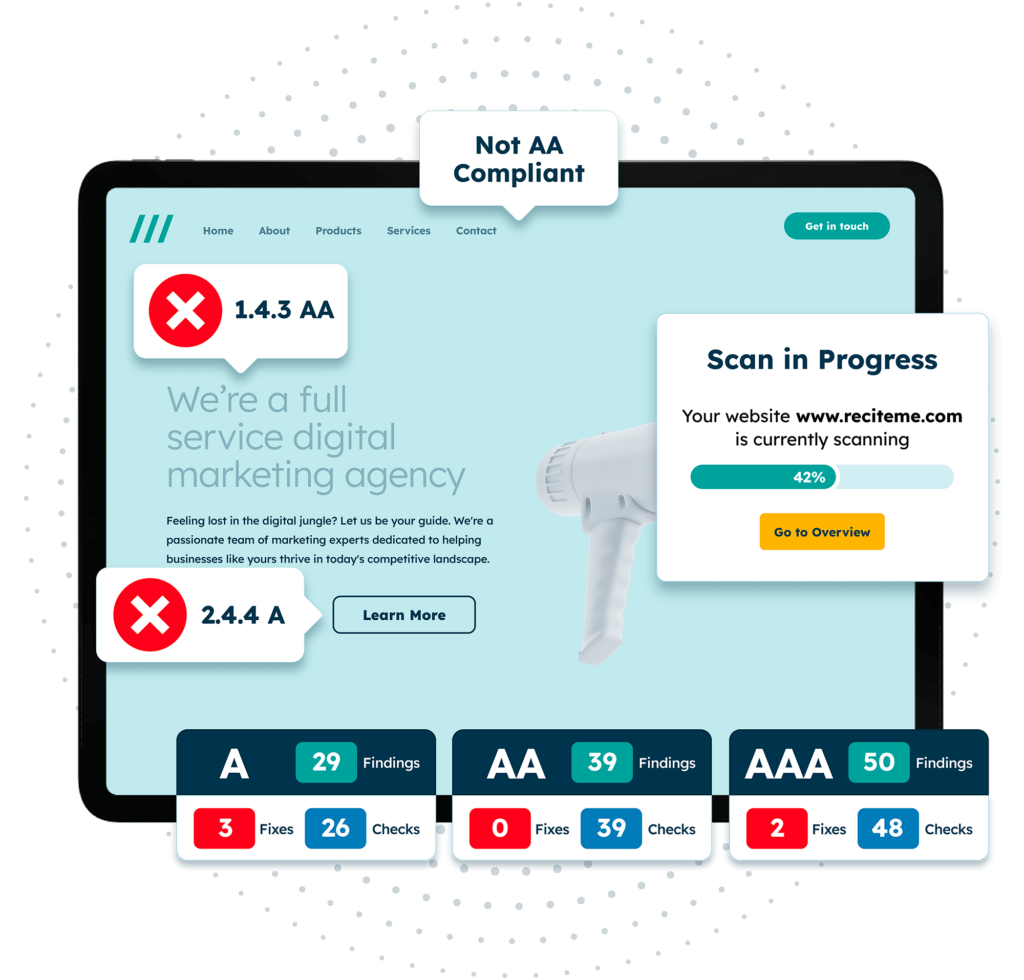
ADA lawsuits that have occurred in New York courts
Did you know that in 2022, there were over 2,300 digital accessibility lawsuits filed in the U.S., the overwhelming majority of them (1,660) originating from New York? These lawsuits highlight the urgent need for businesses to align their digital and physical environments with ADA standards. Let’s unpack a few of them.

Mendez vs. Apple
In the case of Mendez vs. Apple, the plaintiff alleged that Apple’s website was inaccessible to visually impaired users, citing barriers such as a lack of screen reader compatibility. The lawsuit was ultimately dismissed due to a lack of specificity in the claim, reflecting the courts’ stance against overly vague or duplicative lawsuits. However, despite this outcome, the case highlights an important point: that no business, regardless of its size or influence, is immune to ADA lawsuits.
Murphy vs. Eyebobs
In this case, Eyebobs, a retailer specializing in eyewear, was sued for relying on an accessibility overlay widget to claim ADA compliance. In fact, it was thought that the widget was ineffectual, and maybe even made things worse for screen reader users.
The court ruled that the website’s barriers to screen readers and other assistive technologies persisted despite the overlay. This decision prompted Eyebobs to abandon the widget and commit to a full-scale accessibility remediation, highlighting the risks of using quick-fix solutions instead of comprehensive accessibility audits and corresponding actions. Rather uniquely, in this case, the plaintiff was awarded $1,000.
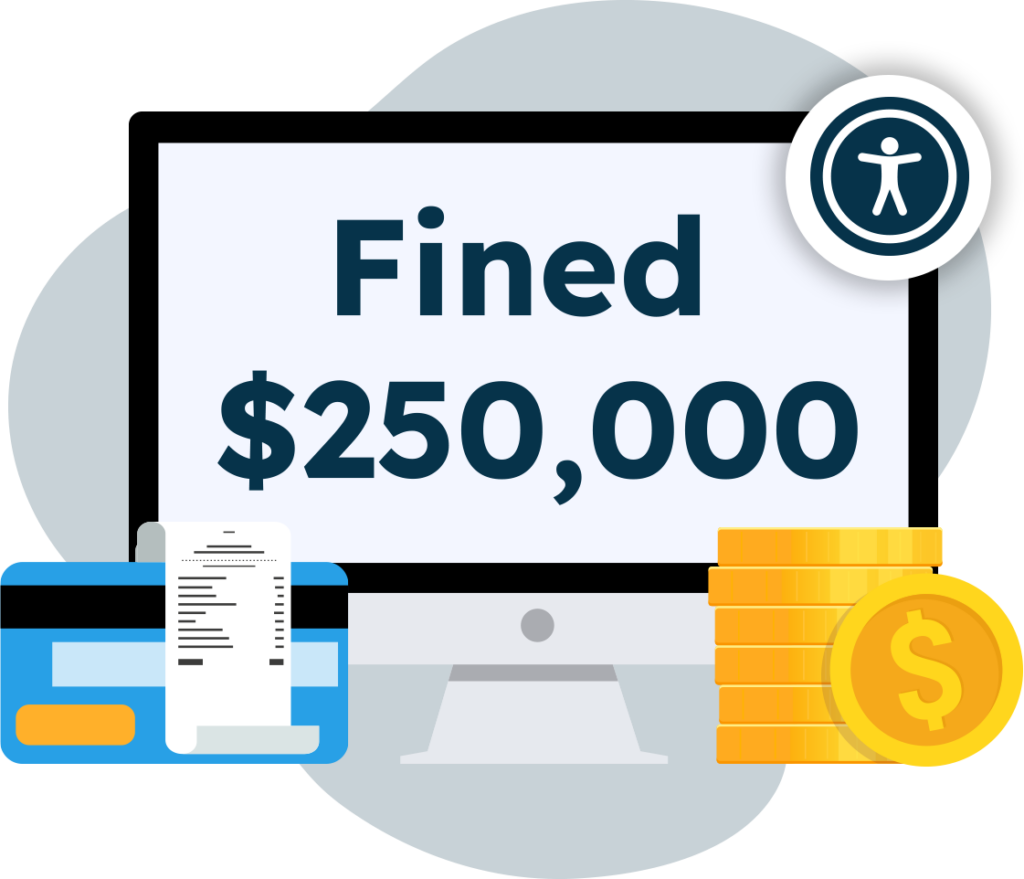
Need more help becoming ADA compliant?
The following resources are packed full of actionable tips and expert advice for making your digital content compliant with the Americans with Disabilities Act:
Free ADA Accessibility Training
Take the first step to ADA compliance by completing our training course.
Free ADA Accessibility Guide
Ensure your organization is meeting the requirements for ADA compliance.

